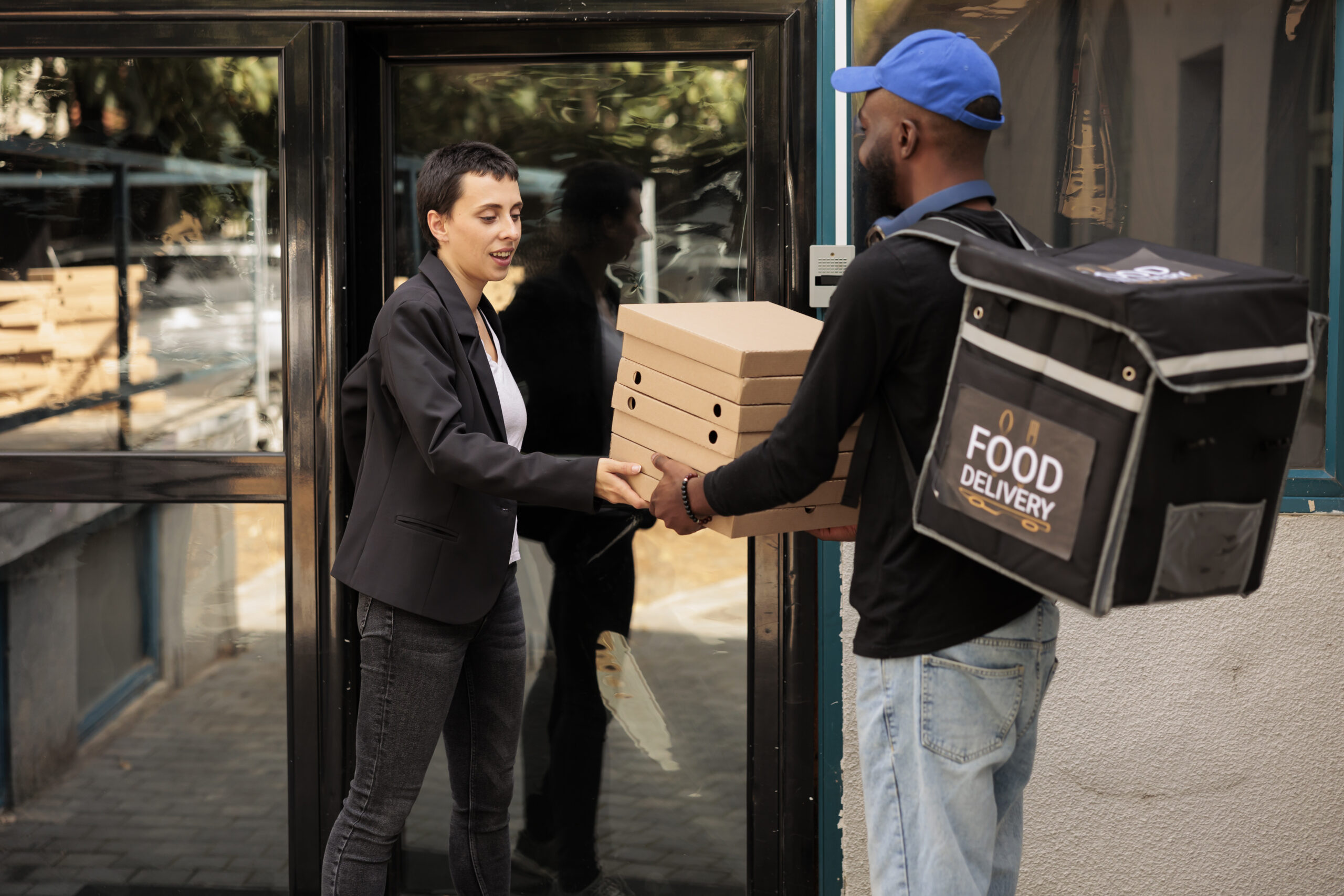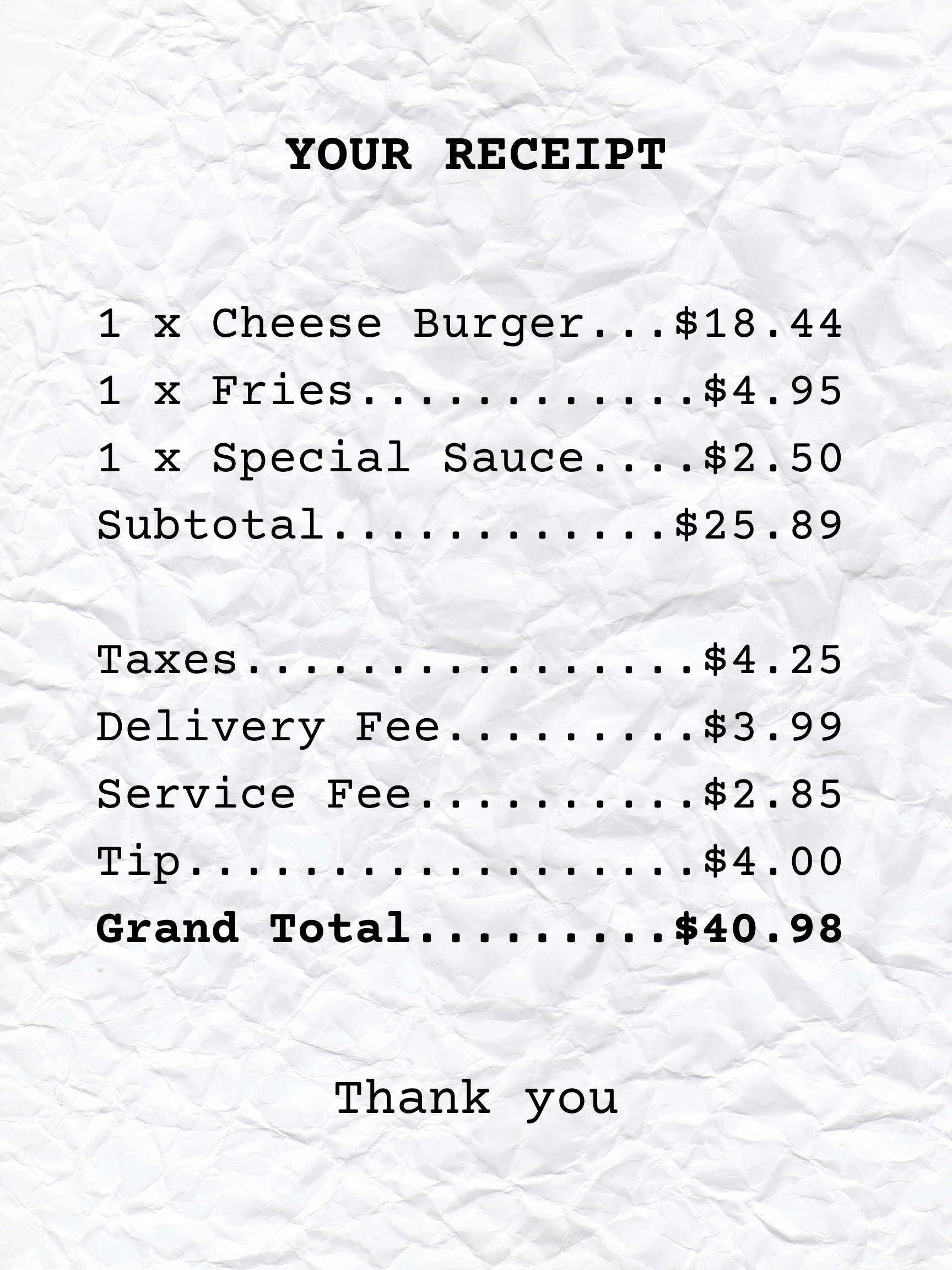What Are All Those Fees? The Case Of The $40 Delivery Burger
by Spencer Reynolds
We’ve all been there: you’re tired, it’s late, and there’s nothing in your fridge. You make a limp effort to check your pantry, and quickly give up – you’re scrolling through your favorite food delivery app before you know it. You’re not feeling picky, you just want something cheap and cheerful. But when you get to the checkout, somehow that $18 burger has become a $40 extravagance, thanks to a confusing and opaque set of fees and charges.
What exactly are those fees, who is charging them, where does that money go, and why is food delivery getting more and more expensive? The answers may surprise you.

Last-mile food delivery isn’t new, with pizza delivery being one of the earliest examples of this type of service. Back then the fees were easy to understand, and many pizzerias charged a flat fee for delivery. You could also tip the driver, normally in cash. However, the recent explosion in food delivery apps and platforms has significantly expanded the market for last-mile food delivery and changed the way we pay for both the food and the service.
The rise of food delivery apps began in the early 2010s with the launch of companies like Postmates, Grubhub, and DoorDash. These platforms allowed customers to order from a wide range of restaurants and have their food delivered to their door, often within an hour. The COVID-19 pandemic accelerated the growth of the food delivery industry which has become increasingly competitive. These companies have grown rapidly in recent years, with some going public and achieving multi-billion dollar valuations. However, the industry is also facing challenges, including rising labor and delivery costs, regulatory pressures, and concerns about profitability.
This is due in part to the high costs of running a delivery platform, including marketing, logistics, and labor costs. Fees have crept up as platforms have come under increasing pressure to be profitable and face harsher competition. In addition, the commission fees charged to restaurants by these platforms have become a source of controversy, with some restaurants advocating for lower commission rates. Rates can be as high as 35% of the bill, which cuts into profit margins for restauranteurs.


In fact, many municipalities passed legislation capping the rates platforms could charge restaurants. In a recent high-profile move, it appears San Francisco’s rate cap (which had been 15% of the food cost) will be lifted, exposing restaurants there to a massive jump in the amounts they pay for delivery services.
Many restaurants have started to get creative to deal with the shifting nature of the food business in a modern, delivery-oriented world. Some will only list high-margin items for delivery, and others artificially inflate their menu prices on delivery platforms to make up for the commissions they pay to the platforms. Other considerations, like improved packaging, also come at a cost.
With all that in mind, let’s break down a receipt from a major delivery platform in Toronto
The Breakdown
Subtotal: $25.89
This is the menu cost of the food you ordered. The restaurant is paid out on this amount, minus the commission charged by the delivery platform.
Often that commission charge is 20-30% of the menu cost on every single order. So in this case, assuming a 30% commission, the restaurant takes home $18.12 and the delivery platform gets $7.76. This is the only part of the bill the restaurant gets to keep.
Taxes: $4.25
Two things in life are sure, death, and taxes. This fee is charged on the whole sale, and remitted to the appropriate government. Neither the restaurant nor the delivery platform pockets this fee.
Delivery fee: $3.99
This delivery fee is charged by the delivery platform and is used to subsidize the cost of hiring drivers, managing logistics, and getting the food to you – hot, and on time.

These fees can range anywhere from $2.00 to $6.00, and are sometimes based on the distance traveled by the driver.
Service Fee: $2.85
This fee is also charged by the platform and covers corporate operating costs like marketing, payroll, and operations. These fees are normally a percentage of the order total and can vary.
Tip: $4.00
We’re all familiar with tipping. Fortunately, the tip goes directly to the driver or delivery person – in most cases. Tipping culture is undergoing a bit of a shift lately, but it’s important to tip your driver, especially if they’re out in the rain or snow.
Grand Total: $40.98
The grand total includes all of the above fees.

